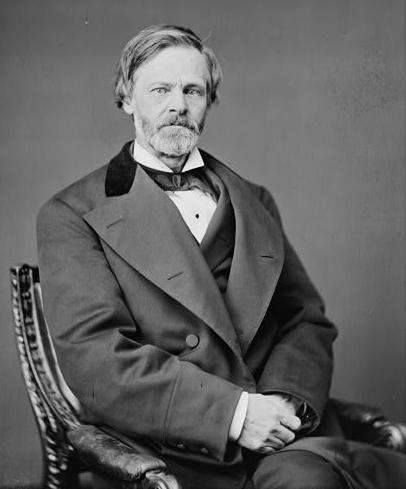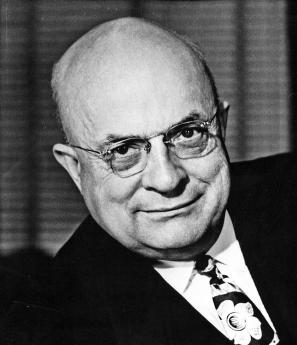Related Topics
Obamacare: Examination and Response
An appraisal of the Affordable Care Act and-- with some guesswork-- its tricky politics. Then, a way to capture major new revenue, even paying down existing Medicare debt, without raising premiums or harming quality care. Then, an offering of reforms even more basic, but more incremental. Finally, the briefest of statements about the basic premise.
Medical reform Subjects (1)
New topic 2019-05-24 20:49:32 description
More Work for the U.S. Supreme Court: Revisit Maricopa
<The Judicial Branch took much of its present form from Chief Justice John Marshall, several decades after the Constitutional Convention of 1787. Somehow, the fact of being the last branch to set its boundaries gives the Judicial branch the last word in certain circumstances, including the possibility that its last word may need some reconsideration. Sometimes not, of course, since if the other two branches make a mistake, the Court can overturn them; but the other two branches can regain control by seeking to change the law. That's the sort of balanced power which the founding fathers envisioned. But if the Supreme Court itself makes a mistake, it remains pretty much a mistake in residence, until the Court itself re-examines the matter. It would be indelicate for anyone else to cite a list of examples of this observation, so they are usually taken up, one at a time. The example with the greatest application to Healthcare is the 1982 decision in State of Arizona v. Maricopa County Medical Society.
Maricopa County is where Phoenix is located, and its County Medical Society was one of the pioneers in what was then called Foundations for Medical Care. These were organizations in which local physicians took the lead in organizing and managing health insurance for the local community. There is no doubt the rules and policies of the Foundations were conceived and implemented by physicians, who felt empowered by the defects of health financing which they saw in daily practice. It is also true these physicians were impatient with both the government and the health insurance companies, who seemed to resist helping the sick poor by implying it violated a per se technicality intended for business corporations. And furthermore, on the topic of business corporations, they are not exactly an enumerated Constitutional power of the federal government. At the same time, "Foundation" physicians could easily see opportunities for reducing waste in the local hospitals which would only be exploited if physicians were in charge because physicians could usually judge the cost/benefit more readily. Having recently returned from World War II, these doctors knew that medical care could be excellent even without such a thing as health insurance, and indeed even when hospitals were only a collection of tents. Perhaps a few of them were overly influenced by the TV serial, "MASH", whose central theme is that if doctors take the lead and do the right thing, much can be forgiven. That's a sort of Hollywood restatement of the latitude of ancient Courts of Equity, intended to cover a situation where obvious harm exists, but no law exactly addresses it.

|
| The Maricopa Medical Society |
Accordingly, the "better sort" of a doctor in Arizona perceived that the respectable ones would readily consent to care for the poor at lower rates, whereas the shirkers in their midst would ruin things for everybody by refusing to do their fair share of pro bono work. Like labor unions, the doctors resented the free rider phenomenon. The idea of a two-class system of medical care was also abhorrent to them, however; if there wasn't enough money to spread around, a "good" doctor would just agree to lower his fees unilaterally. This moral quarrel often conflicts American business, which characteristically takes the view that it doesn't really matter what costs or taxes or burdens are imposed by the government. What matters is that competitors mostly agree to abide by the same handicaps. When handicaps are roughly equal, the difference between success and failure is -- talent. To a considerable degree, talent rising to the top summarizes the aspirations of the anti-trust statutes, where it is both a simultaneous source of cost escalation and price suppression. Physicians are ultimately expected to find their highest duty is fiducial to the patients' best interest, particularly when the main conflict is only a financial one. In the antitrust arena, particularly the per se violations, the difference between a business corporation and medical society is sufficiently wide to justify considerable professional latitude. As it is not, in the case of insurers, and as it only partly remains, in the case of hospitals. The Maricopa Medical Society responded with perhaps excessive enthusiasm to the challenge of making local sense out of the price-fixing dilemma, but it was never given the opportunity to make its case.
At one time, local healthcare costs were held down by imposing competition on the hospitals, treating insurance administration in particular as clerks to pay the bills, rather than as big business's cup-bearer of fairness in a naughty world. Needless to say, the hospitals and health insurers had long chafed at the ability of physicians to change hospitals, and the patients to change insurers when their Attorney General seemed to suspect a return to Robin Hood notions of a special right to defy the law. What disappeared was an ancient concept of professional latitude. In certain parts of the country, big business was already reconsidering its control of hospitals and insurers as their agents in both assuring low-cost medical care, and suppressing its cost. With the defeat of physicians by the Maricopa decision, plus the approaching withdrawal of big business, the way was opened for hospitals and insurance companies to go to war for monopoly control of their own finances. Thirty years later, hospitals and insurers are now universally merging, and applying monopoly controls to admit favored physicians as their employees. The Affordable Care Act is the mechanism by which the government means to control the victors, thus making government itself into the hidden battlefield. It's a far cry from leaving medical decisions in the hands of physicians and their patients, to chose the treatments, and to agree on the price.

|
| Sen. John Sherman |
The Attorney General of Arizona, himself a colorful character, soon brought suit for an anti-trust violation, since price-fixing had been declared a per se violation, or confession of the absence of competition. These were additions made to the Sherman Anti Trust Act by earlier Supreme Courts, who found that an Act first written on the back of an envelope was difficult to administer. Further strictures were imposed by the Clayton Anti-Trust Act, but these might be remedied by subsequent Congresses. The important consequence was that the District Court of Arizona found it quite unnecessary to hold a trial or hear the evidence. The Court found against the doctors entirely on the basis of a motion for summary judgment. The matter passed through the Court of Appeals to the Supreme Court, which on the theory that price fixing is price fixing, by a vote of 4 to 3, upheld the Arizona suit. All the way from a writ of summary judgment in a district court, to the United States Supreme Court, without formal examination of the facts.
Perhaps, strictly on lawyerisms, that was safely correct. But in terms of the effect on medical care, it won the war for control of hospitals and the insurance companies. Somehow it was interpreted to mean that a hospital or an insurance company might do a great number of things which were forbidden to organizations run by physicians. The consequence is that Foundations run by physicians were under constant threat of what might happen to them if they did what HMOs were seen to be doing every day. The whole Clinton health fracas revolved around this particular case and its implications. From the physician point of view, if you had medical training, you were disqualified from running an HMO, because a change of leadership shifted the antitrust issue to a different level for two identical organizations. And that was true even if the physician had been trained for the role, while the administrator had not. What was particularly galling was to be tarred with the same brush of antitrust whereas others would describe their identical behavior as self-disciplined in the public interest. Self-imposed financial restraint was taunted and abused by aspirants for the same job with the same temptations, with multi-million dollar incomes but without adherence to the same code of ethics. The joke is that after all the Clinton Healthcare Plan's uproar, the public decided they disliked HMO's intensely, mainly because they couldn't choose their own doctor, and the doctor was being hampered in doing what seemed professionally best for the patient. None of these legal issues had arisen for physician-run HMOs. While of course, that might happen, such disputes would be settled by physicians, using medical arguments, followed by a change in management if the medical community widely disagreed with the decision. The only substantial difference was that doctors were running one, but subservient in the other, and the Courts had found that when doctors were in charge it amounted to price-fixing between competitors.
It now remains for some case to be found and carried to the Supreme Court which would allow an examination of the facts of this matter, perhaps remanding the case back to the District Court to hold a trial. That would seem a bare minimum after thirty years, and it now no longer get precisely to the issue. Somehow, another way must be found to examine which of two rather extreme theories of the Wild Wild West needs to be laughed off. Either we must re-examine whether, always and everywhere, price-fixing is such an undiluted evil that it never even needs a trial. Or whether we should continue to lynch price-fixers, and declare that medical care is too important to be left to people trained in its complexities, even when disciplined by self-interest in the exercise of its power.

|
| Henry J. Kaiser |
While on the subject of mixing business practices with professional standards, we might as well direct judicial attention to the unfair and probably unconstitutional (equal justice) tax preference for employers who purchase health insurance for their employees. An unnecessary grievance is created for millions of self-employed and unemployed people. Now seventy years old, this grievance has dubious evasions at its historical origin, has resisted multiple efforts for repeal, and benefits only one large group: big business. Henry Kaiser claimed he had difficulty attracting employees to his war industries because of wartime wage and price controls. Persuading the War Production Board to look the other way, he cloaked inducements to employees as something other than employee compensation. The fringe-benefits circumvention has since grown entirely out of control but is fiercely defended by business and union interests. As it grows, however, the inequity for the self-employed and unemployed to remain excluded from it also grows. Instead of addressing this problem directly, it might well be conjectured that recent regulatory attempts at forcing individual policies into group policy eligibility might be a way of exacting a price for cooperation, and for lobbying silence.
Summary of the Maricopa Case
From a legal standpoint, the uncomfortable feature of the case of the Maricopa Medical Society is that it went all the way to the Supreme Court without any trial of the facts or real opportunity for the defendants to present their case. That is, the whole HMO movement was effectively removed from the hands of physicians by a motion for summary judgment, on a Supreme Court decision, 4 to 3.
To hold a trial of the facts by remanding the case for trial, would seem to be the only way to introduce the defense that the doctors would have made. It is improper to suggest to their lawyers what the defense should be, but certain facts are now public knowledge. The Medicaid Act was passed in 1965, requiring state consent for a joint program. By 1972, Arizona was the only remaining state not to have agreed to Medicaid, which by then was widely recognized as the worst medical program in America. In 1982, Arizona adopted a small portion of Medicaid, and it was only in 1988 that it fully adopted the program. In 2001, Arizona's governor was offered 7.9 billion dollars over four years, as matching money for the insurance exchange feature of the Affordable Care Act. The governor recommended to the Legislature that they accept the offer because at least it was "better than Medicaid". There can be little doubt the Legislature of Arizona was adamant on the issue.
What were the doctors expected to do with the sick poor people? No doubt, there was a wide divergence of opinion, but it seemed likely only a handful of saintly volunteers would come forward, and none of them would be able to afford to pay hospitals what it cost. They felt that only by bullying a substantial majority to take the cases would it work, and the only weapon they had was to make it a condition for membership in the medical society.
Under these contentious circumstances, surely the Supreme Court could find some words to create a better outcome. Price fixing is a per se violation of the act, and there is little doubt that all HMOs fix prices. But only a physician-run HMO could be accused of fixing prices for competitive reasons, although it is arguably how strongly they would compete for indigent patients. The Supreme Court may be reluctant to overrule the price-fixing part, and the Arizona politics of this case are surely thorny. But at least the Court could find some clarifying language about physician-run HMOs. The opportunistic response of the non-physician-run HMOs was to exploit the opportunity to eliminate the competition of physician-run groups. In the meantime, HMOs run by non-physicians have become contentious in the extreme, whereas the earlier physician-run ones were tolerated by most physicians, and embraced by quite a few. The matter is one of the important threads in the Obamacare controversy, so the Supreme Court has an opportunity to improve quite a few situations by writing a clarifying paragraph or two.
Originally published: Tuesday, December 17, 2013; most-recently modified: Friday, May 24, 2019